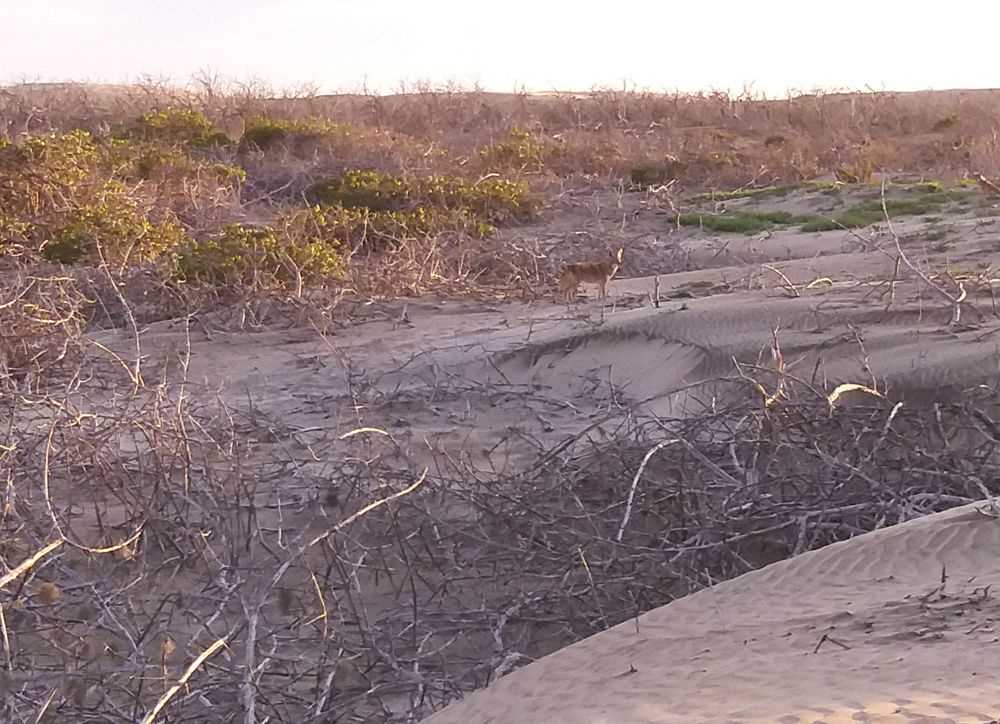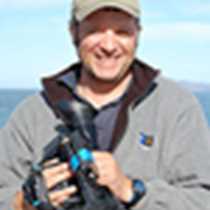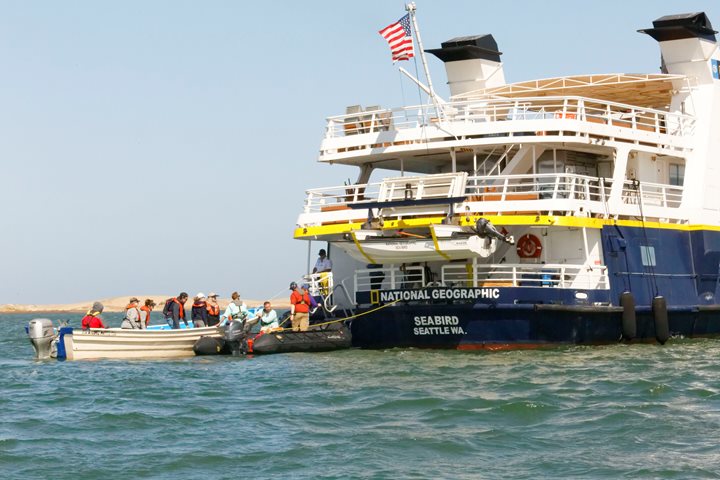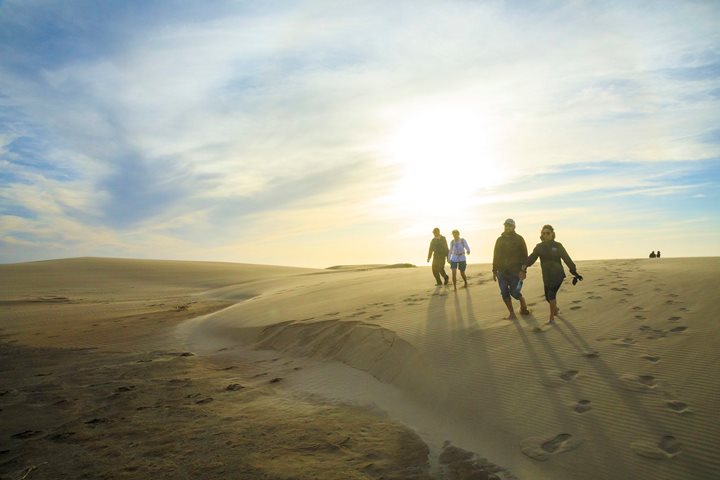National Geographic Sea Lion made a very quiet morning navigation from the Magdalena Bay area to Boca de la Soledad (Mouth of Solitude), a northern entrance to the nursery of the fray whales. The ship navigated along the narrow, shallow and technically non-navigable canal that join Almejas and Magdalena Bay to Santo Domingo Bay, north of Lopez Mateos. The channel is a beautiful ecosystem – a coastal lagoon made by the barrier island of Magdalena and the peninsula of Baja California, surrounded by dense patches of mangroves (red, white, black and sweet). This is a very important nursery for coastal and open-sea fish species and multiple marine invertebrates. On the branches, resident sea and land birds watched the transiting ship. On the sandy shores and mudflats, many migratory birds (whimbrels, willets, sandpipers, godwits and many other) found their temporal meals by peeping into the wet ground full of polichaete worms, clams, little crabs, snails, parchment worms and so on.
In the water, several groups of bottle-nosed dolphins escorted the ship as bow riders, and some whales blew here and there. Our guests enjoyed all these things while transiting the canal. Sofia Merino, a Natural Habitat naturalist, presented on board the ship a very interesting introduction to whales and gray whale behavior. In the afternoon, once the ship anchored near the Boca, some of our guests had the first round of whale watching while others explored the island’s sand dunes. The whales displayed a broad behavioral repertoire, from spy hops to breeches. We also saw some mothers and calves. On the sand dunes, our guests appreciated the presence of four coyotes and a pair of bald eagles, which are rare occurrences during the trips, as well of thousands of shells on the beach, the halophytic vegetation and lichens on the branches of mangroves. A sunset of multiple colors crowned our day of joy in the Magdalena whale area.









